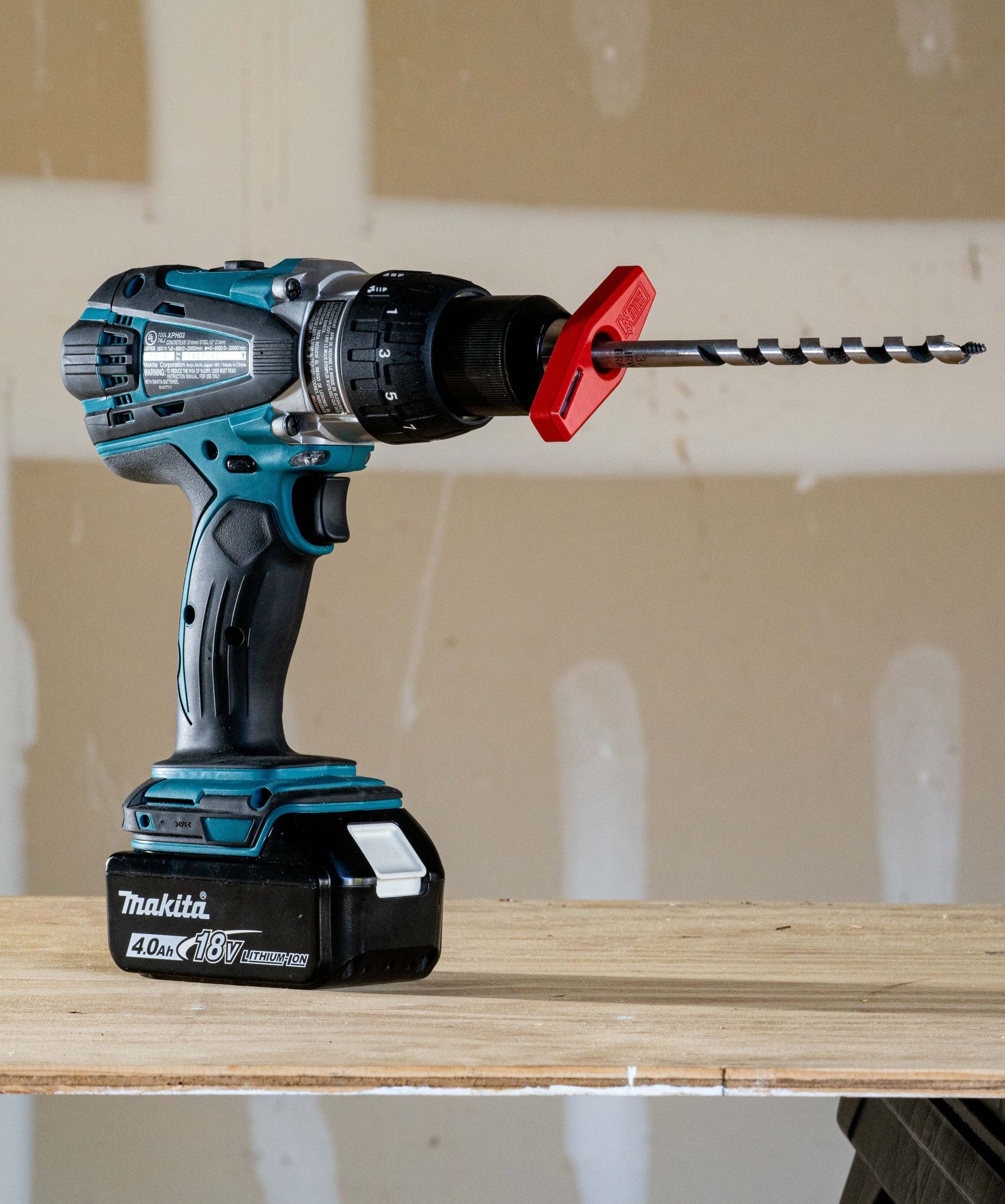Does BullseyeBore Core work with specialty drill bits such as spade, step, augur, forstner, hex shank, or aircraft bits?
The extended versions of BullseyeBore Core (CR1-101 or CG1-101) have been successfully tested with a wide variety of specialty bits such as Hex Shank, Spade, Augur, Step, Forstner, and Aircraft bits in different sizes and lengths. However, BullseyeBore Inc. cannot guarantee compatibility with any specific specialty drill or cutting bit. There are tens of thousands of specialty bits in use worldwide today, and the BullseyeBore team cannot possibly test all of them.
As general guidance, all specialty bits used with BullseyeBore Core must incorporate a chuck mounting shaft with a maximum diameter of 0.5” and a cutting tool head of 1” or less. BullseyeBore Core cannot support any bit or bit shaft that is larger than 0.5”, or any cutting tool head larger than 1”. It is also possible that some specialty bits that fall within these acceptable criteria may not work with BullseyeBore Core.
Moreover, larger diameter drill bits or specialty bits with larger cutting diameters can introduce work surface vibration or vibration of the bit in the bore hole that translates into the projected patterns. See the FAQ for
What causes projected laser pattern Vibration?
Always read and follow the
BullseyeBore Core Safety Guidelines
before attempting to use BullseyeBore Core or any BullseyeBore Core accessories on a drill or in an actual drilling operation.
Here is a general guide for specific specialty bits:
HEX SHANK BITS
The standard versions of BullseyeBore Core (CR1-100 or CG1-100) and extended versions of BullseyeBore Core (CR1-101 or CG1-101) have been tested with a wide variety of standard Hex Shank bits with a ¼” hex shank. Moreover, some hex shank drill chucks that are typically common on impact drivers have been successfully tested with BullseyeBore Core. Please see the FAQ titled: Will my hex shank drill chuck work with BullseyeBore Core?
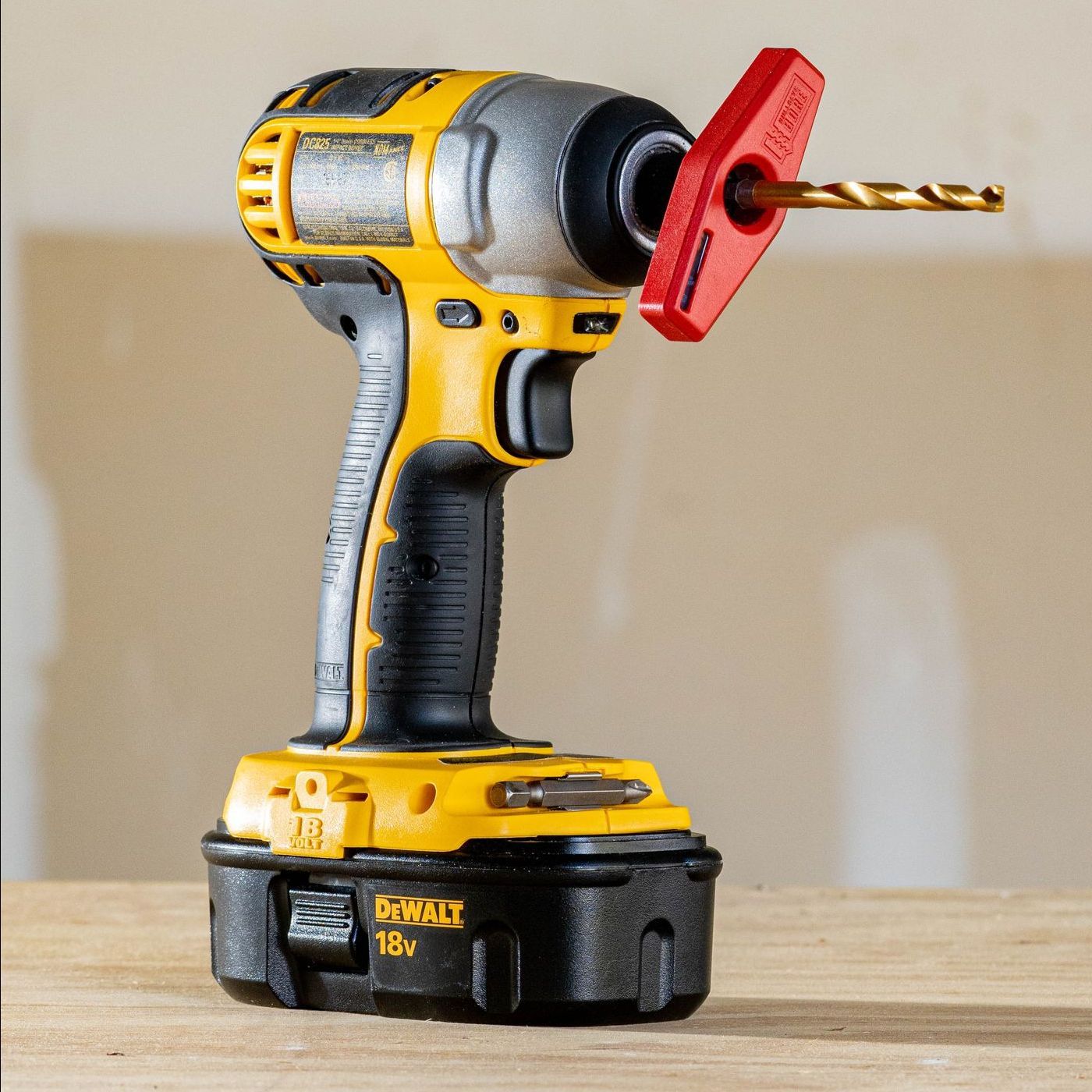
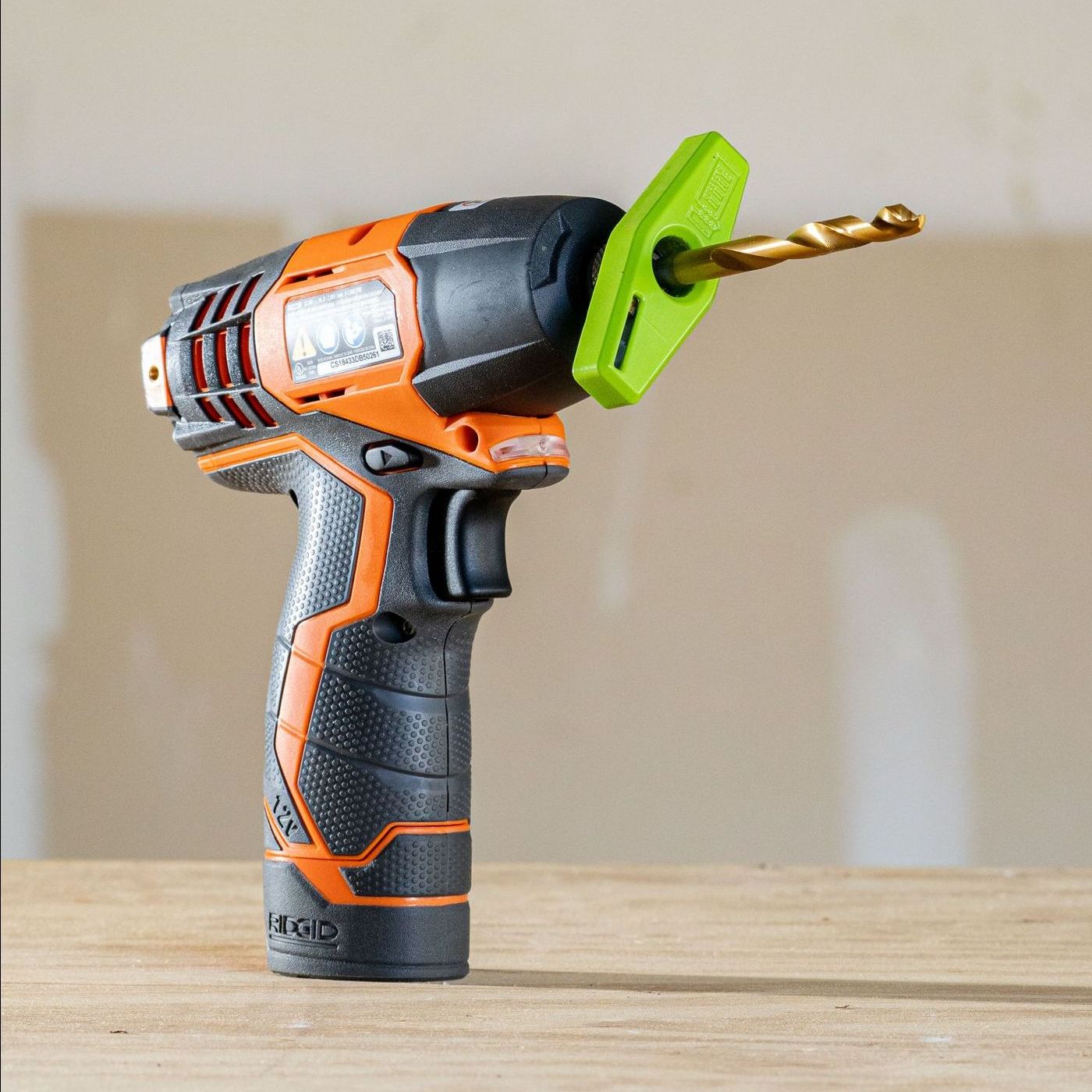
SPADE BITS
Spade bits with cutting heads of up to 1.0” cutting diameter have been successfully tested with the extended versions of BullseyeBore Core (CR1-101 or CG1-101).The Spade bit chuck mounting shaft must have a maximum diameter of 0.5”, and there must be enough room on the mounted shaft for BullseyeBore Core to securely attach to the chuck face. Since Spade bits tend to be longer, use of a Chuck Extension is recommended. A Chuck Extension is designed to reduce the Alignment Pattern size with longer drill bits.
0.5" Spade Bit Usage Video
Spade bits with a cutting diameter of 0.5" should be attached and secured in the drill chuck prior to installation of BullseyeBore Core and/or an optional BullseyeBore Chuck Extension.
Larger Spade Bit Attachment Video
If the Spade bit has a cutting diameter larger than 0.5", the attachment process requires BullseyeBore Core (and the optional Chuck Extension) to be mounted on the drill prior to the Spade bit. The video below contains an example with a 0.75" Spade bit, and the procedure is outlined in the FAQ Does BullseyeBore Core require removal for a drill bit change?
AUGUR BITS
Augur bits of up to 1.0” cutting diameter have been successfully tested with the extended versions of BullseyeBore Core (CR1-101 or CG1-101).The Augur bit chuck mounting shaft must have a maximum diameter of 0.5”, and there must be enough length on the mounted shaft for BullseyeBore Core to securely attach to the chuck face. Since Augur bits tend to be longer, use of an optional BullseyeBore Core Chuck Extension is recommended. A Chuck Extension is designed to reduce the Alignment Pattern size with longer drill bits. If the Augur bit cutting diameter is larger than 0.5”, the attachment process also requires BullseyeBore Core to be mounted on the drill prior to the Augur bit (just like the larger Spade bit attachment process outlined above).
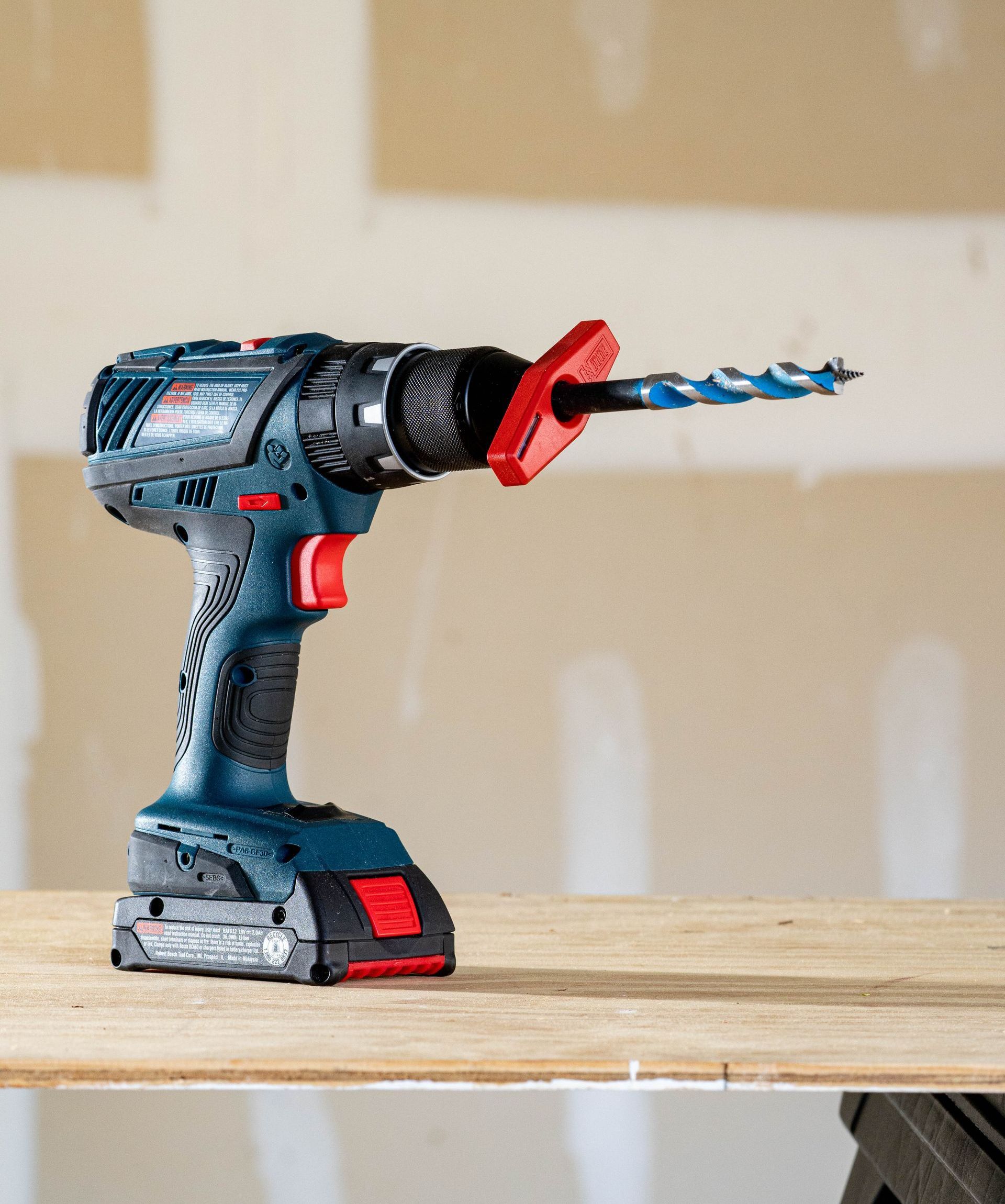
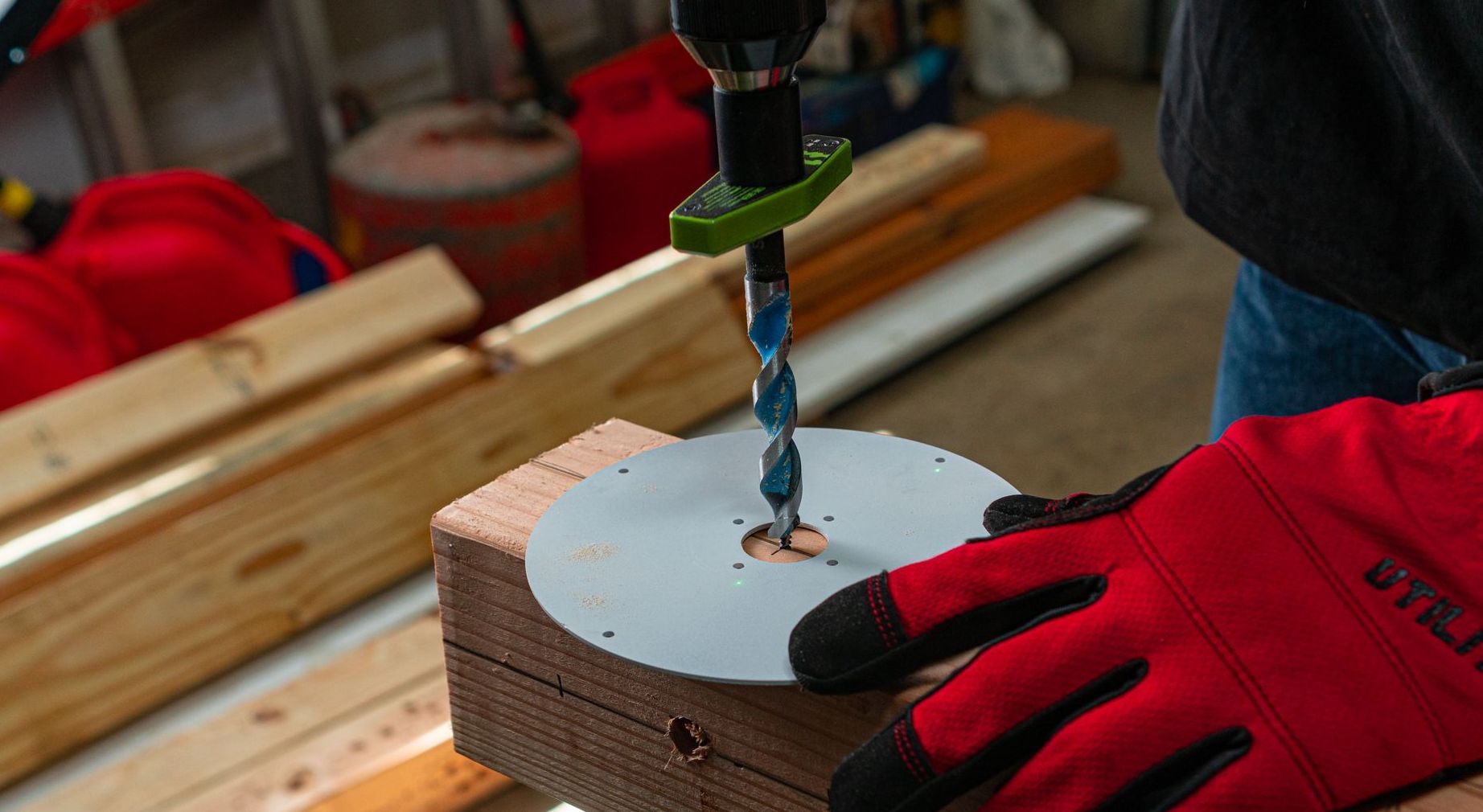
STEP BITS
Step bits of up to 1.0” cutting diameter have been successfully tested with the extended versions of BullseyeBore Core (CR1-101or CG1-101). The Step bit chuck mounting shaft must have a maximum diameter of 0.5”, and there must be enough length on the mounted shaft for BullseyeBore Core to securely attach to the chuck face.
Depending on the diameter of the Step bit, the mounting position of BullseyeBore Core on the chuck may need to be rotated so that one or more of the projected Alignment Beams can clear the angled Step bit diameter. Moreover, one or more of the projected Alignment Beams may simply be blocked by the Step bit no matter what rotational mounting position of BullseyeBore Core on the chuck is implemented.
If the Step bit cutting diameter is larger than 0.5”, the attachment process also requires BullseyeBore Core to be mounted on the drill prior to the Step bit (just like the larger Spade bit attachment process outlined above).
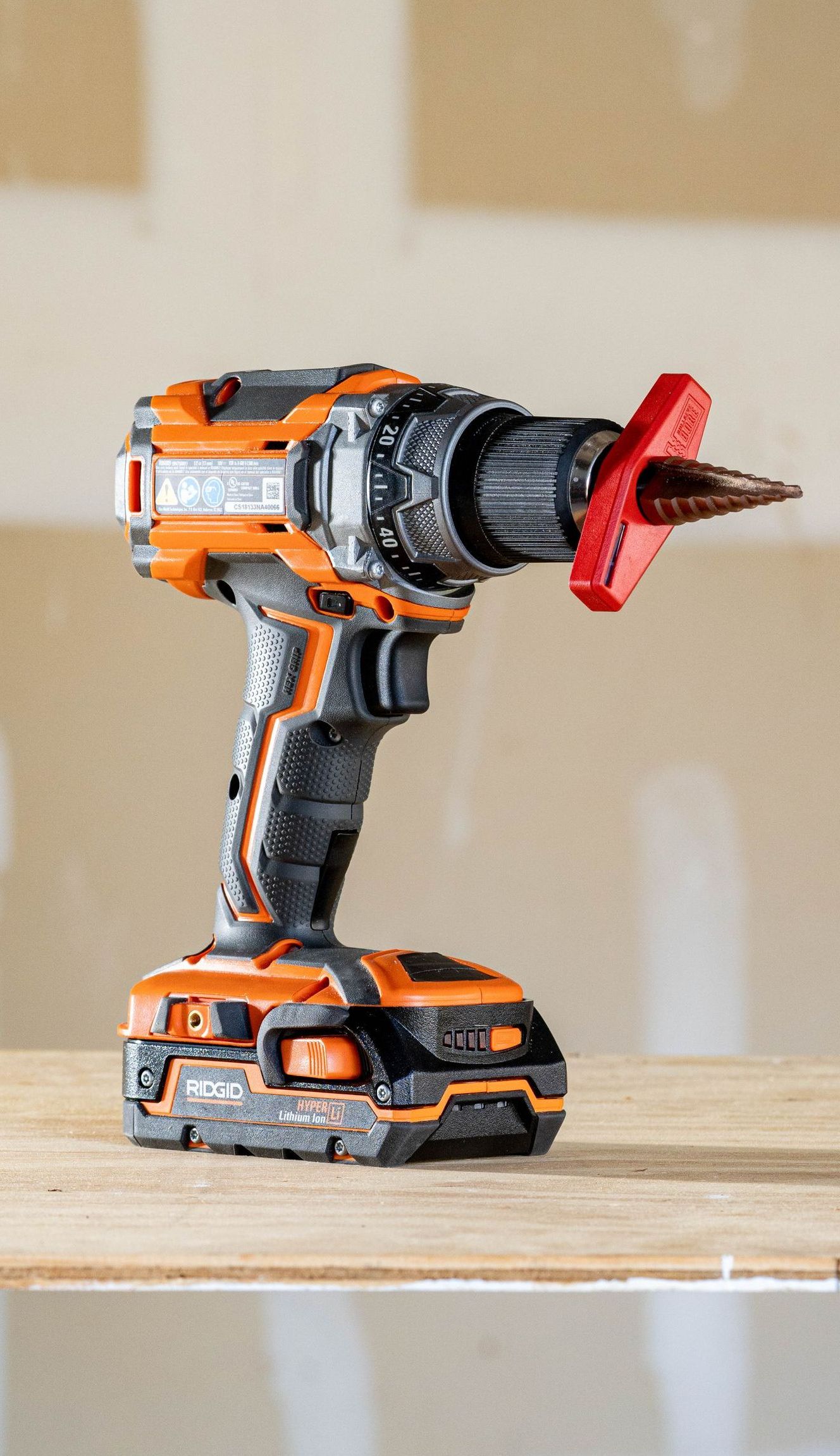
FORSTNER BITS
Forstner bits of up to 1.0” cutting diameter have been successfully tested with the extended versions of BullseyeBore Core (CR1-101 or CG1-101). The Forstner bit chuck mounting shaft must have a maximum diameter of 0.5”, and there must be enough room on the mounted shaft for BullseyeBore Core to securely attach to the chuck face. Further, if the Forstner bit cutting diameter is larger than 0.5”, the attachment process also requires BullseyeBore Core to be mounted on the drill prior to the Forstner bit (just like the Spade bit attachment process outlined above).

